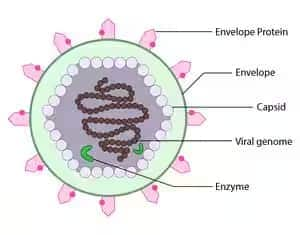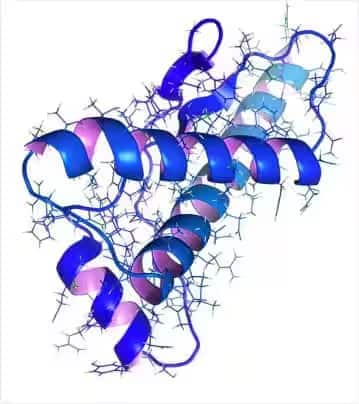Acellular Organisms - Meaning, Types and Function
Acellular organisms are life forms that lack cellular structure, such as viruses, viroids, and prions. They cannot perform independent life processes and require a host for survival and reproduction. Understanding acellular organisms is crucial for Class 11 Biology and NEET exam preparation.
This Story also Contains
- What are Acellular Organisms?
- Acellular – Meaning
- Acytota and Cytota
- Viruses
- Viroids
- Prions
- Difference between Cellular and Acellular Organisms
- Importance of Acellular Organisms in Biology
- Acellular Organisms NEET MCQs
- FAQs on Acellular Organisms

All the basic activities that happen in a living body take place inside the smallest living part, called the cell. The discovery of the cell was done by Robert Hooke. Life on Earth depends on both living and non-living things. When we look at what these things are made of, we find that non-living things are made of tiny particles called atoms, while living things are made of cells. In biology, viruses and vaccines are called acellular because they are not made of cells and are not fully considered living.
What are Acellular Organisms?
Acellular organisms lack a cellular structure, in contrast to typical living organisms that comprise one or more cells. Examples of such organisms are viruses, viroids, and prions. These do not have their own cellular machinery, like organelles or enzymes, to maintain independent life, and hence they rely on host cells for reproduction and metabolic activities.
Acellular – Meaning
The term "acellular" refers to anything which is not made of cells and cannot perform cell division except under specific conditions. It characterises entities like viruses, viroids, and prions, which do not have a cellular structure. These acellular forms rely on host organisms for survival and reproduction.
Acytota and Cytota
Acytota and Cytota are the two fundamental biological classifications of acellular organisms. Acytota is made up of acellular entities, such as viruses, viroids, and prions, that have no cellular structure and must use a host organism for their survival. Cytota includes all forms of cellular life, ranging from prokaryotes to eukaryotes, having distinct cellular structures and thus having independent metabolic functions. This allows us to distinguish cellular life from acellular life.
Viruses
Viruses are tiny infectious agents that can only reproduce inside living cells. They are made of genetic material (DNA or RNA) and a protein coat but lack cellular structure. Below are few characteristics of viruses:
Viruses are non-cellular infectious agents made of genetic material (DNA or RNA) enclosed in a protein coat called a capsid.
They are inactive outside living cells but become active and multiply only inside host cells (obligate parasites).
They infect plants, animals, bacteria, and even fungi.
Example: HIV, Influenza virus, Tobacco Mosaic Virus (TMV).
The structure may be helical, polyhedral, or complex, depending on the type of virus.
Viruses can cause diseases like AIDS, flu, smallpox, and measles.
Viroids
Viroids are the smallest known infectious agents, made of only a short strand of RNA. They infect plants and do not have a protein coat like viruses. Following are some characteristics of viroids:
Viroids are smaller than viruses and consist of only a short strand of circular RNA, with no protein coat.
They infect plants, causing diseases that can affect crop production.
Viroids are replicated inside host cells using the host's enzymes.
First discovered by Theodor Diener in 1971.
Example: Potato spindle tuber viroid (PSTVd).
They do not code for proteins, but can still disrupt normal cell function.

Prions
Prions are unusual infectious particles made only of proteins, with no genetic material. They can cause serious brain-related diseases in animals and humans. The characteristic features of certain Prions are given below:
Prions are infectious protein particles that contain no genetic material (no DNA or RNA).
They cause diseases by changing the shape of normal proteins in the brain.
Prions are highly resistant to heat and disinfectants.
Example: Mad Cow Disease (BSE), Creutzfeldt–Jakob disease (CJD) in humans.
Discovered by Stanley Prusiner, who won the Nobel Prize.
Prion diseases affect the nervous system, leading to brain damage and death.
Difference between Cellular and Acellular Organisms
Living organisms can be cellular (made of one or more cells) or acellular (not made of cells). The table below shows how they differ based on structure, function, and examples.
Cellular Organisms | Acellular Organisms |
Living organisms are made up of one or more cells. | Organisms that are not made up of cells. |
It has a cell structure and contains organelles like cell membranes, cytoplasm, mitochondria, etc. | Do not have any type of cell organelles, only contain protein and genetic material for viruses. |
Consider into living organisms category | Generally not considered into the category of fully living creatures. |
Perform metabolic processes independently | Cannot perform independent metabolic processes. |
Can reproduce on their own. | Required for a host for replication example virus. |
Can easily survive independently in different environments and conditions. | Cannot survive on their own they need a host to stay active. |
Cells have compounds like proteins and enzymes. | No cells are present, and compounds are also absent. |
Can easily perform simple to highly complex processes. | Cannot perform complex functions without entering a host cell. |
Importance of Acellular Organisms in Biology
Acellular organisms like viruses, viroids, and prions play a significant role despite their simple structure.
They help scientists understand the borderline between living and non-living systems.
Viruses are widely used in genetic engineering and biotechnology, for example in gene therapy and vaccine development.
They also serve as tools in molecular biology to study DNA replication, transcription, and protein synthesis.
They have medical importance since many viral infections (like influenza, HIV, and COVID-19) influence human health.
Acellular Organisms NEET MCQs
Q1. Viruses form _______ around their nucleic acid.
Envelope
Capsid
Capsule
Cell membrane
Correct answer: 2) Capsid
Explanation:
Viruses encase their nucleic acid in a capsid. A protein shell called the capsid shields the virus's genetic material which can be either DNA or RNA. It is composed of capsomeres which are smaller protein components. During infection, the capsid helps the virus's attachment to host cells.
Hence, the correct answer is option 2) Capsid.
Q2. Viroids differ from viruses in having:
DNA molecules without a protein coat.
RNA molecules with a protein coat.
RNA molecules without a protein coat.
DNA molecules with a protein coat.
Correct answer: 3) RNA molecules without a protein coat
Explanation:
Since viroids are RNA molecules without a protein covering, they differ from viruses.
Viroids are tiny and uncomplicated. They lack the protective protein covering found in viruses and are composed of a single circular RNA strand. They only infect plants, and by disrupting their regular functions, they can lead to illnesses.
Hence, the correct answer is option 3) RNA molecules without a protein coat.
Q3. The pathogenicity of a virus is due to its _____ while host specificity is due to its _______. Choose the correct option to fill in the blanks.
Nucleic acid, protein coat respectively
Mesosome, external envelope respectively
Glycoprotein, lipoprotein layer respectively
Protein coat, genome respectively
Correct answer: 1) Nucleic acid, protein coat respectively
Explanation:
The pathogenicity of a virus is determined by its genome, which consists of nucleic acid (either DNA or RNA), while its host specificity is dictated by the viral protein coat or capsid. The protein coat contains specific receptors that enable the virus to recognize and attach to host cells, determining which organisms or tissues the virus can infect.
Hence the correct answer is option 1) Nucleic acid, and protein coat respectively.
Also Read:
FAQs on Acellular Organisms
What are acellular organisms?
Acellular organisms are living entities that are not made up of cells. Unlike normal organisms which have a cellular structure, acellular organisms lack a typical cell membrane, nucleus, or cytoplasm. Instead, they are made up of genetic material (DNA or RNA) surrounded by a protein coat or lipid envelope. The best-known acellular organisms are viruses, which can reproduce only inside a host cell. They are considered at the borderline of living and non-living.
What is the meaning of acellular in biology?
In biology, the term acellular means “without cells.” It refers to structures, substances, or organisms that do not have a cellular organization. Acellular entities cannot perform life processes independently, such as metabolism or reproduction, and often depend on host organisms for survival. For example, viruses are acellular infectious agents as they lack the basic features of living cells but still show some properties of life when inside a host.
What are examples of acellular organisms?
The most common examples of acellular organisms are viruses, such as bacteriophages, HIV, and influenza virus. Other acellular entities include viroids (infectious RNA particles without a protein coat) and prions (infectious proteins without nucleic acids). These acellular organisms are much smaller than bacteria and can only multiply inside a host cell. They are important in biology and medicine as they cause diseases in plants, animals, and humans.
What is the difference between cellular and acellular organisms?
Cellular organisms, such as bacteria, fungi, plants, and animals, are composed of one or more cells that carry out life functions independently. They have structures like cytoplasm, organelles, and a plasma membrane. In contrast, acellular organisms like viruses, viroids, and prions do not have cells. They lack organelles and cannot perform metabolism or reproduce on their own; instead, they require a host cell for multiplication. Thus, cellular organisms are truly living, while acellular organisms exist at the borderline of life.
Frequently Asked Questions (FAQs)
These are the organisms which cannot be divided into discrete cells or it may be a something like an organic material but not consists of individual cells.
Unicellular organisms consist of single cell microorganisms which can have single cells like amoeba. Acellular means the non living thing which does not contain any type of cell or it may not be divided into cells hyphae produced by fungi.
Cell is a basic fundamental living unit present in a living body. Cell was discovered by Robert Hook when he observed a honeycomb structure in a microscope invented by him.
Protozoans are the eukaryotic microorganisms which exist mainly as unicellular. The maximum protozoans are pathogenic in nature and have the protoplasmic level of organization and in case of Amoeba the body is not limited to the cytoplasmic boundaries so it is regarded as the acellular.
Viruses are the pathogens which are made up of a protein coat and genetic material which may be DNA or RNA. The viruses are not viable in the environment they become when they enter the host. They are made up of only protein and DNA/RNA and they replicate inside the host by using the energy from the host. Hence, viruses are known as acellular.
